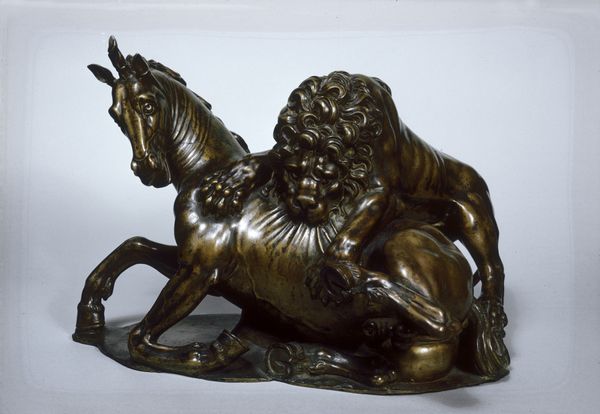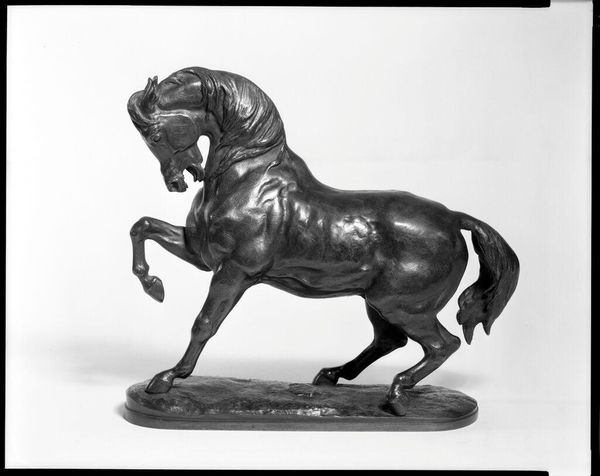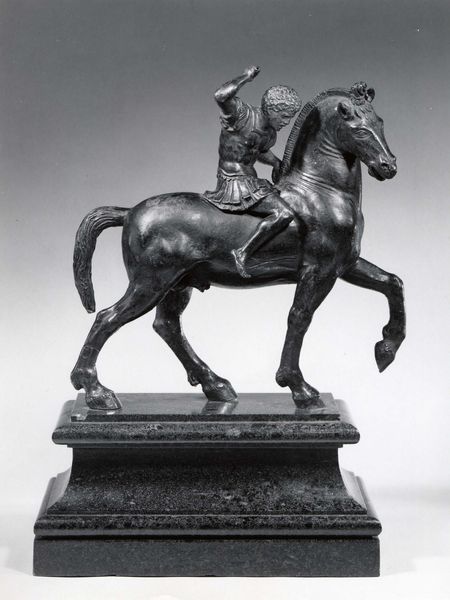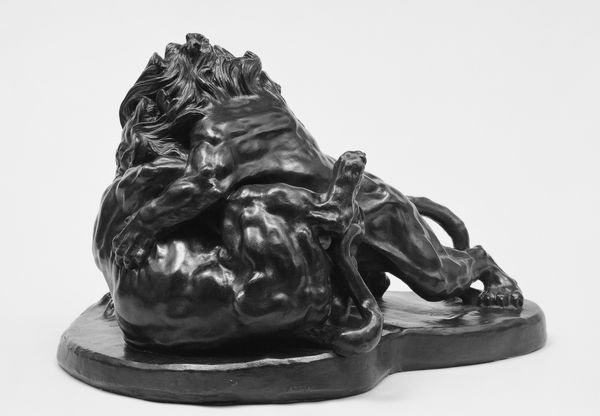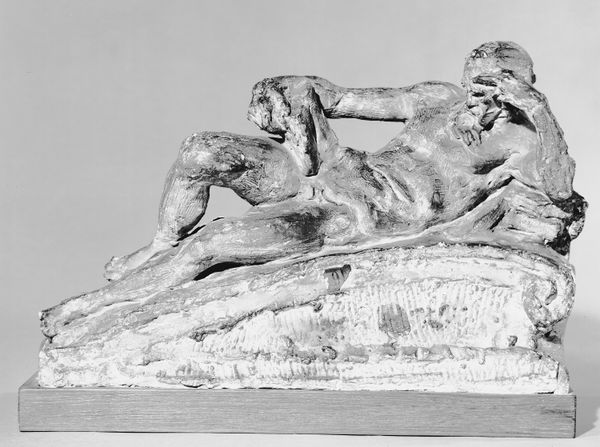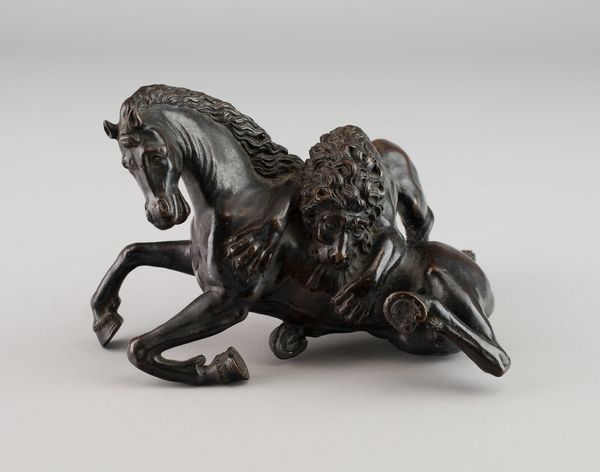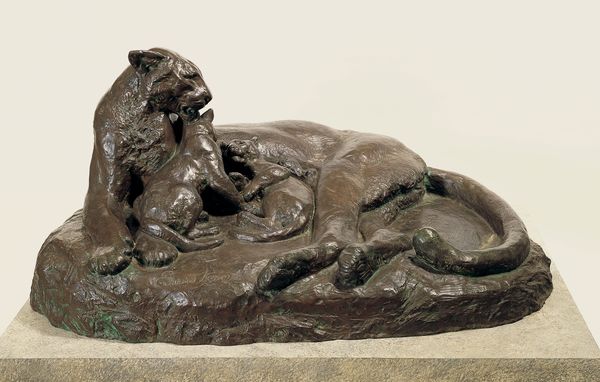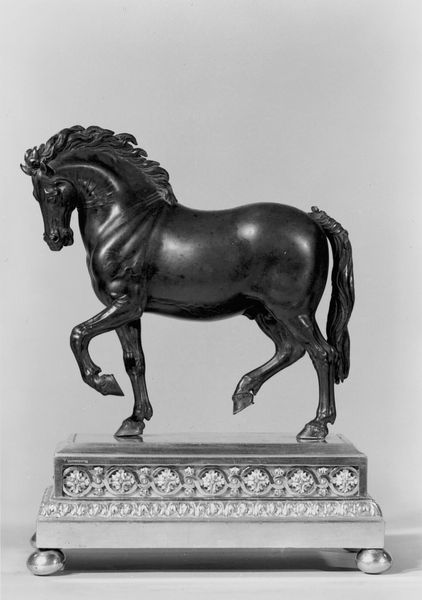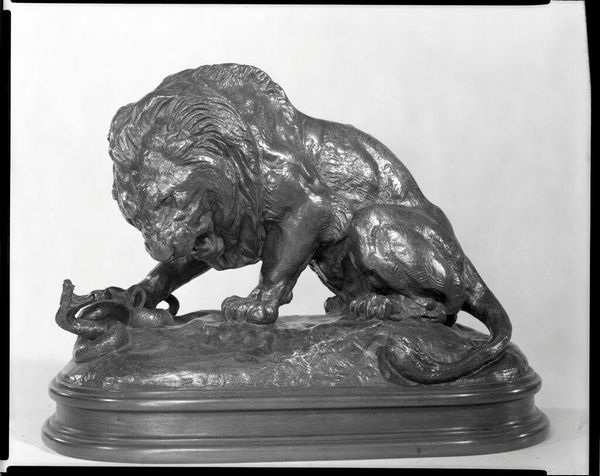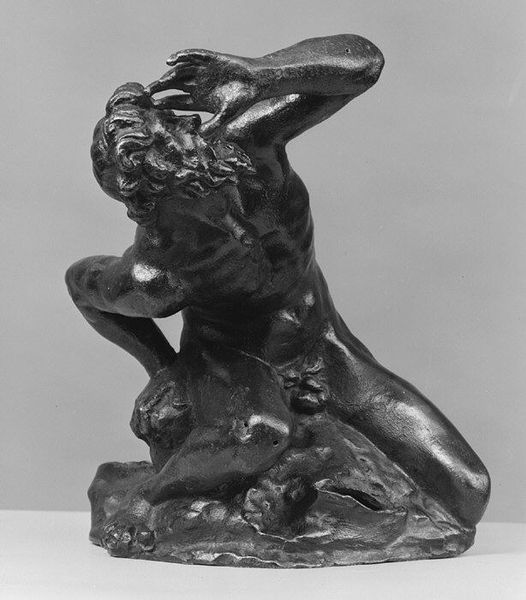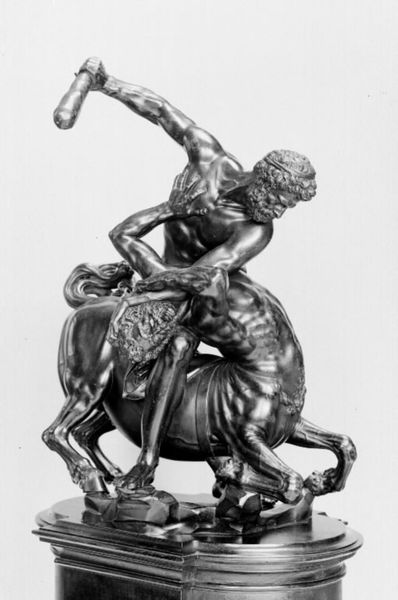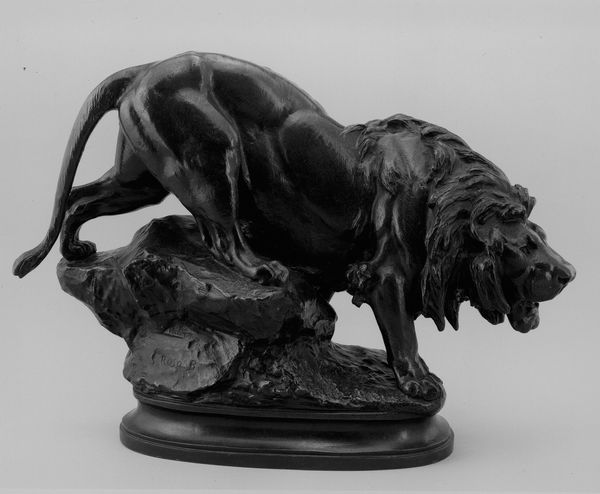
bronze, sculpture
#
animal
#
sculpture
#
bronze
#
mannerism
#
figuration
#
sculpture
#
history-painting
Dimensions: 26.7 × 45.7 × 27.9 cm (10 1/2 × 18 × 11 in.)
Copyright: Public Domain
Editor: This bronze sculpture, "Lion Attacking a Stallion," was created sometime between 1600 and 1620 by Antonio Susini. The scene is so dynamic and dramatic. I'm curious to hear your interpretation. What strikes you most about it? Curator: What's immediately compelling is the bronze itself. Consider the social context: bronze casting, particularly at this scale, signified power and access. Susini wasn't just making art, he was participating in a system of value that privileged certain patrons and artistic traditions, right? It challenges traditional hierarchies through skillful manipulation, doesn't it? How do you view its connection to the traditions it's either embracing or critiquing? Editor: That’s interesting! I hadn't considered bronze as a marker of class, but it makes sense. I guess I was so focused on the narrative. The Mannerist style adds to the drama but almost feels… exaggerated? Curator: Exactly. Now think about *how* this exaggeration is achieved. It's through labor: the molding, the casting, the chasing to create those intensely muscular forms. The sheen wasn't accidental. And for *whom* was all this intense labor being expended? Is this spectacle a display of wealth and control? Editor: It really reframes the work. So instead of just seeing an exciting scene, we're really looking at the economic and social structures of the time. It is a commisioned and consumed object. Curator: Precisely. Seeing the piece in terms of its making, its materiality, its cost, gives us insight into its purpose and audience. That labour tells a story beyond just lion versus horse. Editor: I never considered how the choice of material and the labor connected with Mannerist values adds meaning. Thanks for shifting my perspective.
Comments
No comments
Be the first to comment and join the conversation on the ultimate creative platform.
